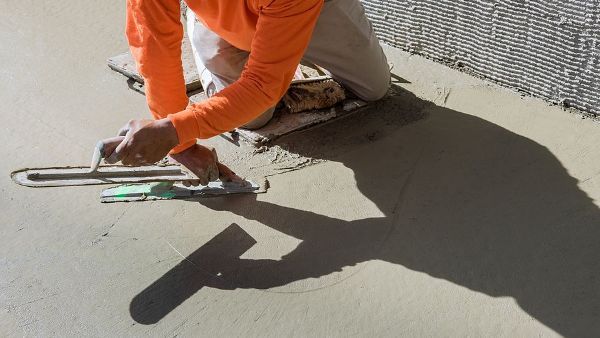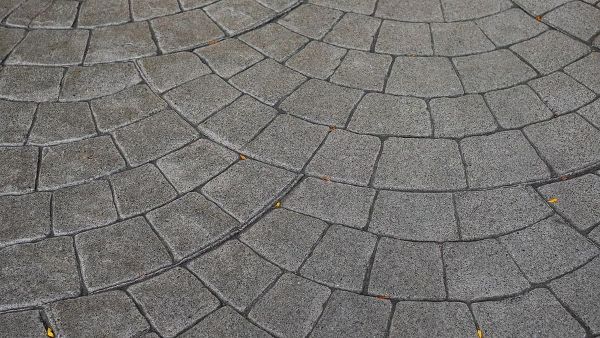
7 Reasons Your Concrete Cracks
Where Do Concrete Cracks Come From?
Small, moderate, or severe cracks in concrete may appear inevitable. After all, go for a walk and cracks seem everywhere. However, cracks, especially anything more than the small occasional crack, are not always a natural outcome of having concrete foundations, patios, sidewalks, driveways, stairways, and pool decks. A concrete contractor should approach construction projects the right way the first time to reduce cracks occurring. Contractors can also assess your already cracked concrete and figure out solutions. Meanwhile, let’s look at the top reasons your concrete cracks.
1. Extreme Temperature Swings
The water in your concrete (and pavement in general) can contract and expand with extreme temperature changes. Sun and ice are not concrete’s best friends. Cracks result sometimes from the movement of water as temperatures get high or low quickly.
Fortunately, Windsor, CA, doesn’t experience too many extreme temperature swings. To minimize the damage to your concrete from temperature changes, get a concrete contractor to add sealant or seal coating.
2. Too Much Weight
Concrete is incredibly strong but cannot bear infinite weight without eventually cracking. Weak concrete spots include the edges of a driveway, so you may see more cracks there. Once a concrete surface starts to crack, more cracks are likely to follow.
To prevent cracks from too much weight, try to keep heavy objects off your concrete. At a minimum, do not group all the heavy objects together. Keep them in separate areas to balance the pressure and reduce the chances of cracks.
3. Wrong Materials
Concrete is not one size (or type) fits all. For instance, there is a big difference between products labeled for construction use and those for decorative concrete use. Similarly, some types of concrete or cement are rated for higher temperatures while others are rated for lower temperatures. It’s also possible to choose general-use concrete that adapts a bit to different temperature situations.
In any case, if you try to use decorative concrete for, say, a driveway or the foundation of a house, you can expect cracking. Construction-use concrete is formulated to withstand high-stress circumstances such as heavy vehicles traveling on it and staying parked for hours at a time.
4. Inferior Drying
Every concrete contractor should give pavements adequate time to dry and strive for optimal drying conditions (basically, days that are warm and dry). However, if your concrete is poured when the weather is slightly too cold, drying issues such as eventual cracks could result.
Insufficient moisture in the cement is another way inferior drying occurs. It can cause cracks pretty much immediately on the surface of the concrete as it starts to dry. Contractors can remedy this situation by adding water.
5. Too Much Water in the Mix
The opposite of insufficient moisture, too much water, is a culprit behind many cracked concrete surfaces, too. An abundance of water in the pavement mix means the water makes the cement weaker and less able to withstand stress and weight. It will still be able to function OK. Your vehicles won’t fall through your driveway or anything like that, but the driveway is more prone to cracks and damage.
If you’re doing the concrete work yourself, go with one bucket of water per 10-pound bag of cement. Of course, your mix may still get watery despite your best efforts. Scoop in a handful of cement one at a time to create more thickness.
6. Shifting Ground
Earthquakes are an obvious cause of ground movement causing cracked concrete. However, even regularly shifting tree roots, soil, and dirt under driveways and concrete foundations result in heaving (the upward movement of concrete) and settling. Over time, severe cracks may occur.
Tree roots are actually a serious cause of concrete cracks. They mess with the soil and can lift pavements. To minimize this problem, remove trees around where your concrete is and add more dirt before pouring. Other causes of shifting ground can be blasts, so beware if you're doing yard work or home projects along these lines.
7. Bad Joint Placement
Poorly placed or poorly cut joints can lead to an explosion of cracks. The purpose of the joints is to allow the concrete space to grow and shrink, but problems occur if you get them wrong. Aim for two or three times the slab thickness (in inches) to determine joint location. If your slab is six inches, you would have joints cut every 12 to 18 feet for a secure concrete foundation. Uneven pressure leads to cracks, and cracks do affect the strength and resiliency of concrete.
A Concrete Contractor Can Help
Taking the proper precautions with new projects goes a long way in preventing cracked concrete, but you are not doomed if your concrete is badly damaged. Contractors can assess the problem and make repairs or recommend new jobs. For more information on how
to fix concrete cracks and prevent them in the first place, contact us at RTS Construction.
Share Your Comments
Articles You May Also Like
Get Started On Your Concrete Project Today!
From concrete foundations to backyard patios, we do it all!
RTS Construction proudly serves: Sonoma County • Marin County • Sonoma • Santa Rosa • Rohnert Park • Petaluma • Windsor • Napa • Sebastopol and surrounding areas.




